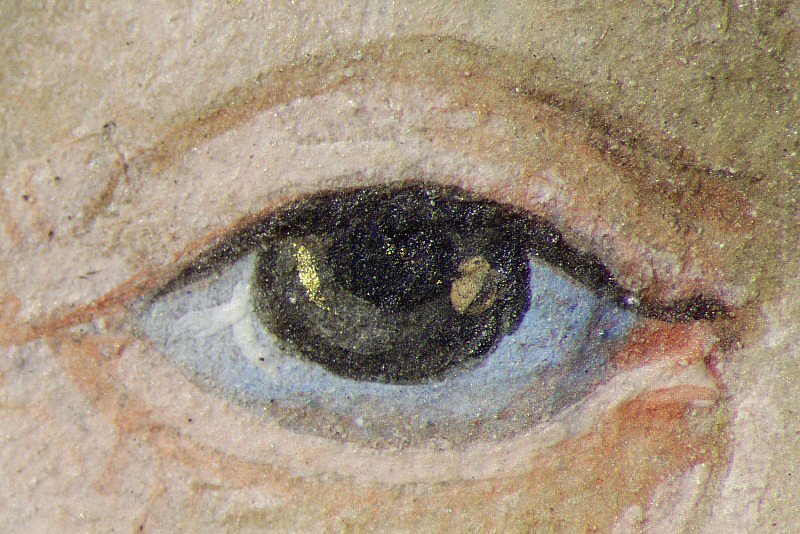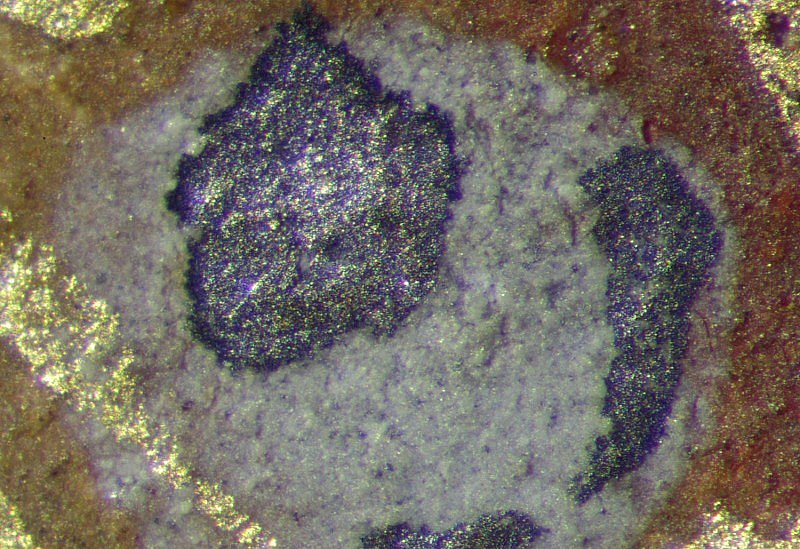Blue pigments
Artists' Materials
Azurite was used in the majority of blue areas on every folio analysed, although the presence or absence of trace amounts of barium, zinc and arsenic suggest the use of different sources or batches of the same pigment. High amounts of barium impurities, in particular, characterise the images attributed to the Painter of Additional 15677. Ultramarine and smalt were identified on one folio each (fols. 15r and 14r respectively). Indigo was also detected in a minority of areas on several folios.


Christ as Saviour of the World (prayer Salve sancta facies)
This page was illuminated by the Painter of Additional 15677. Christ’s image is framed within an elaborately carved wooden structure casting shadows on the pink wall behind. It incorporates three-dimensional images of saints and the story of St Veronica painted in shell gold on a monochrome background, simulating a scene carved in relief. The frontispiece to the prayer ‘Hail, holy face’ fuses two popular devotional images – Christ as Saviour of the World (Salvator mundi), blessing and holding a crystal globe, and the Holy Face, Christ’s true image. The latter, not made by human hands, was miraculously imprinted on St Veronica’s cloth (known as the vernicle, sudarium or the Byzantine mandylion), when Christ wiped his face on the way to Golgotha.
Christ’s eyes reflect heavenly light, their glow painted in shell gold on one side, and a mixture of two luminous colours, vermilion and lead-tin yellow type I, on the other (hotspot 1). The globe is a pictorial study of reflection and refraction. Its silver highlights appear bright on the left side, but very dark – as if tarnished – on the right side. This may have been an intentional effect, aimed at conveying the three-dimensionality of this sphere. The dark grey outlines which decorate the grey gems in the medallion (hotspot 2) also contain silver.